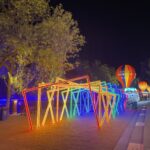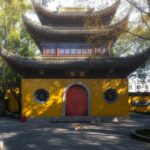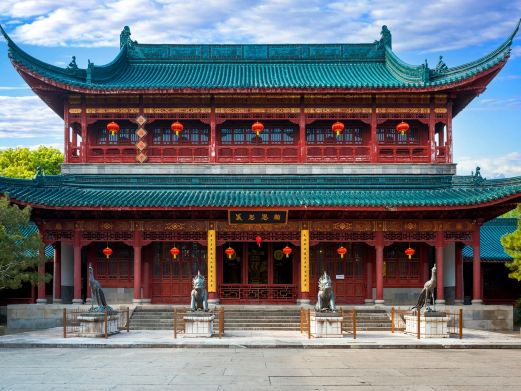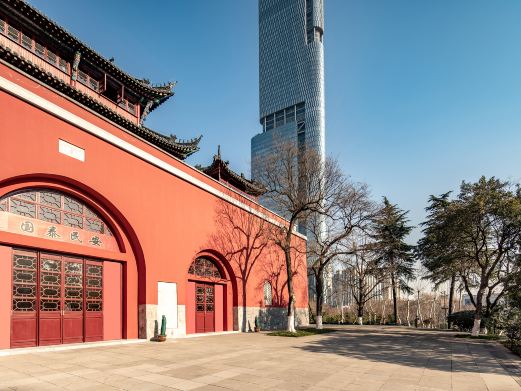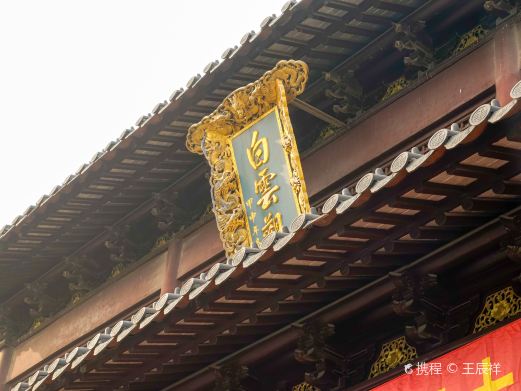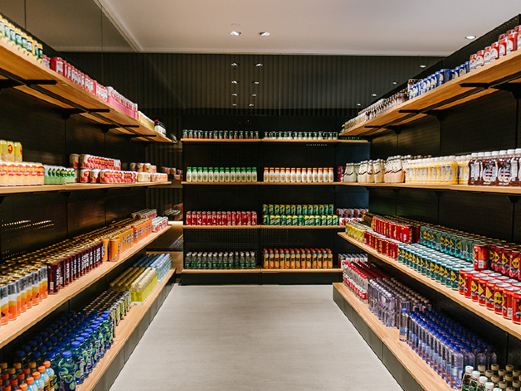Canglang Pavilion has a long history among the existing gardens in Suzhou. Together with Lion Grove Garden, Humble Administrator’s Garden, and Lingering Garden, it represents the gardens of different periods in Suzhou, namely the Song, Yuan, Ming, and Qing dynasties. They are collectively known as the ‘Four Famous Gardens of Suzhou’. Compared with other popular gardens, it is less crowded and quiet here.
The garden wins with its rockery scenery. The exquisite lattice windows on the double corridor are also worth appreciating. The literati Su Shunqin of the Northern Song Dynasty built the Canglang Pavilion after being demoted. The name of the garden is taken from the meaning of ‘If the water of Canglang is clear, it can wash my hat ribbons; if the water of Canglang is turbid, it can wash my feet’ in ‘The Fisherman’ from Chu Ci. The gate of the garden is in the northwest corner. Before entering the garden, one can see a pool of green water outside the garden. Cross the bridge and enter the garden. In the center of the garden is a large rockery. At the top of the mountain is a pavilion – Canglang Pavilion. Other buildings surround the rockery. After entering the garden, there is the Imperial Stele Pavilion, which displays historical materials related to the Canglang Pavilion. You can learn about it first. Then when you tour, you won’t be confused and just ‘visit here’. Then don’t go to the rockery on the left first. Take the road on the right, circle the garden counterclockwise for a week, and then go to the rockery where the Canglang Pavilion is on the top. This tour route is more reasonable. The first impression the garden gives people is that there are many rockeries. Secondly, the double corridor is very long. And then there is the landmark building, Canglang Pavilion. These constitute the essence of the garden. On the pillars of the Canglang Pavilion on the top of the rockery, there is a couplet with the upper sentence from Ouyang Xiu and the lower sentence from the owner Su Shunqin: The cool breeze and the bright moon are priceless. The nearby waters and distant mountains are all affectionate. Sitting in the pavilion, you can enjoy the lush scenery around the garden. The double corridor shuttles through the garden. There is a shed, so rainy days will not affect the interest in visiting the garden. There are hollowed-out lattice windows on the wall of the double corridor, with different patterns. It is said that there are a total of 108 patterns of lattice windows in the whole garden. To the north of the rockery, a section of the double corridor between the rockery and the river outside the garden acts as the wall of the Canglang Pavilion. Through the lattice windows, you can see the waterscape outside the garden. On the double corridor, there are also waterside buildings such as the fish-watching place and the waterside pavilion. You can step out of the wall and get close to the waterscape. Looking at the garden from outside the Canglang Pavilion, because the river surrounds the garden, you will feel that the garden is characterized by waterscape. The beauty inside the garden is also revealed through the lattice windows of the double corridor. Generally, gardens have high walls. The Canglang Pavilion is faintly visible because of the double corridor. Looking at the scenery inside the Canglang Pavilion, you will feel that the garden is characterized by mountain scenery. Standing in the double corridor, you can see both the waterscape and the mountain scenery, skillfully integrating the two. To the southwest of the rockery, there is the Fragrance Pavilion where osmanthus trees are planted in the courtyard for enjoying osmanthus. There is also the Five Hundred Worthies Shrine and the Yangzhi Pavilion embedded with the stone carving of a small portrait of Wen Zhengming inscribed by the emperor. To the southeast of the rockery, there is the largest building in the garden, the main hall, Mingdao Hall, which was a place for literati to give lectures in the past. There are three rubbings of stone inscriptions of the Song Dynasty hanging on the wall. Further south, there are three connected halls named ‘Cuilinglong’. The surrounding area is full of green bamboos. The bamboo wind is blowing gently and the bamboo leaves are rustling. Walking in the bamboo forest, a fresh feeling comes to you.At the southern end of Canglang Pavilion, there is a rockery where the Kanshan Tower stands, marking the highest point in the garden. To the east of the rockery lies the Yaohua Realm, a house used by the garden owner for receiving guests.

Opening times: 07:30-17:00 from November 1st to February 28th; 07:30-17:30 from March 1st to October 31st.

Concessionary policies: Children: Free admission for children aged 6 years (inclusive) or under, or with a height of 1.4 meters (inclusive), with valid identification; 50% off for minors aged between 6 years (exclusive) and 18 years (inclusive). Elderly: Free admission for seniors aged 70 years (inclusive) or above, with valid identification; 50% off for seniors aged between 60 years (inclusive) and 70 years (exclusive).

Preferred treatment targets: Free admission for those with ‘People’s Republic of China Veterans’ Preference Certificate’ and ‘People’s Republic of China Martyrs, Fallen in the Line of Duty, and Deceased Military Personnel’s Dependents Preference Certificate’ (excluding garden within the garden, in-park charges, and night tour projects).

